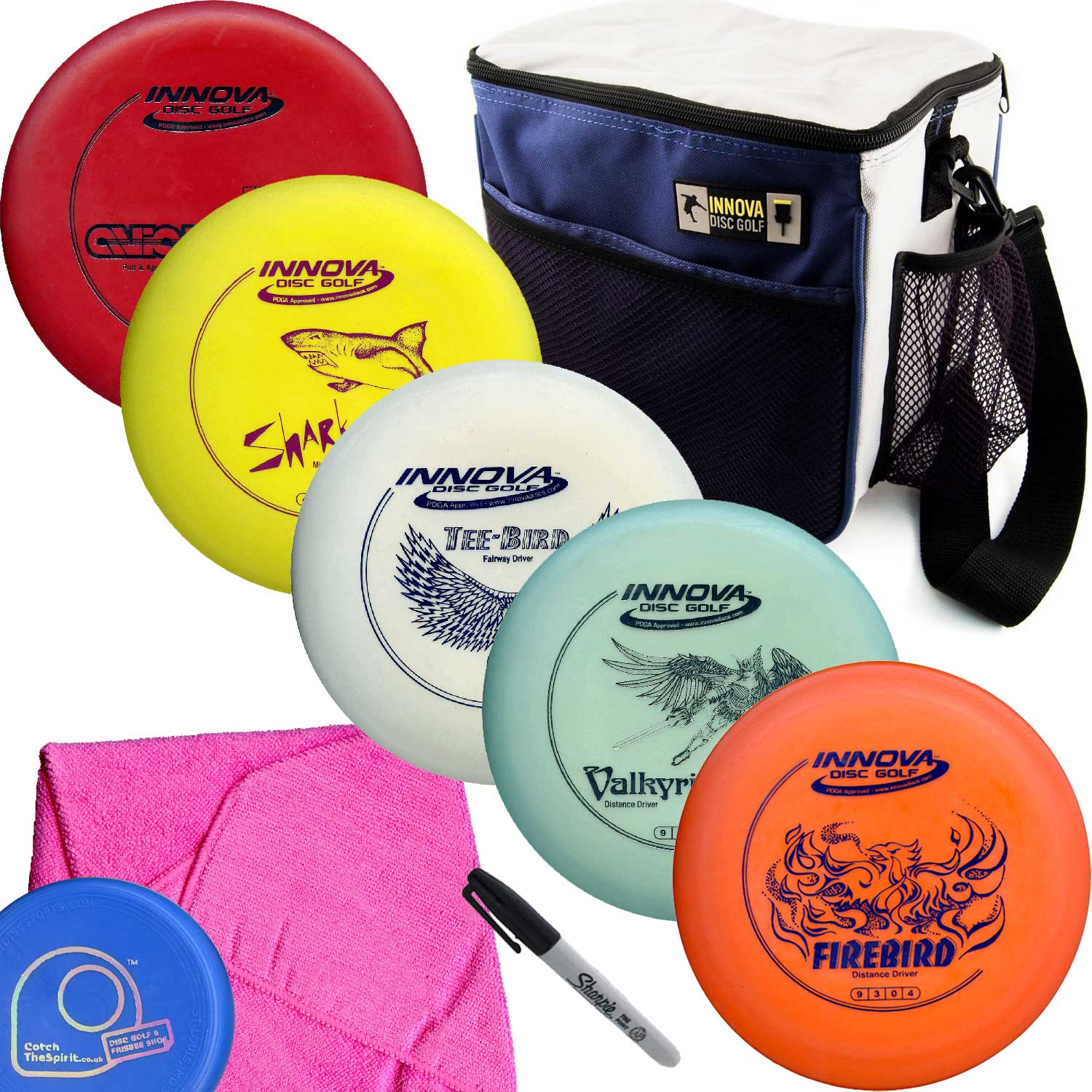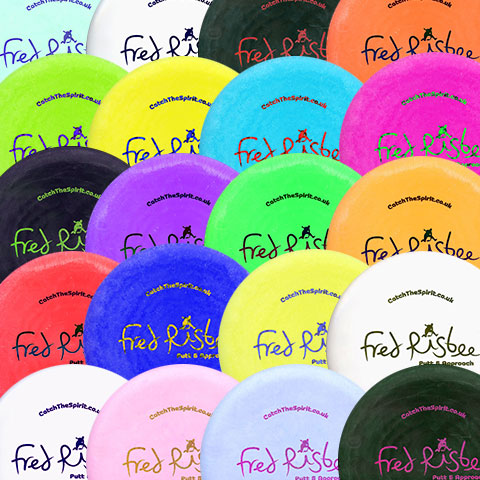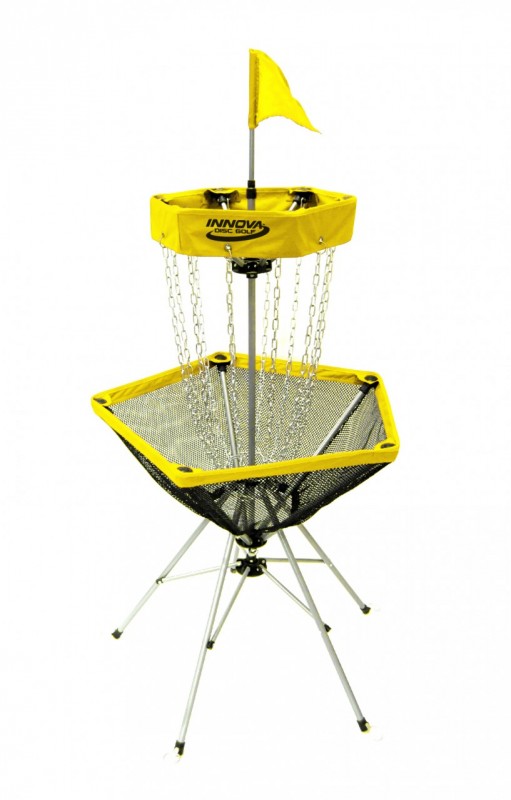Here we look at backhand form for the 30-60m range approach shots. The distance where you need to get down in no more than two shots, while sometimes giving it a run for the chains!
The Power Grip
Use the power grip for a consistent release for distances that need a bit of power. For shorter, finesse shots inside say 25m, you may prefer to use the same hybrid fan grip that is used for putting.
Like holding the steering wheel of a car. Fingers wrapped around the rim with the tips resting on the bottom of the flight plate. The thumb is on the top of the disc directly above the inside rim.
Backhand Approach Shots (Straight)
This is the nearest we get to a Frisbee throw in Disc Golf. The good old straight throw of 30m+ is a fundamental skill in disc golf and is what solid pars are made of.
Stand upright and sideways on to the target with feet slightly more than shoulder width apart, knees flexed and weight evenly distributed. If the run for the chains isn’t on, focus your aim on landing the disc as close to the bottom of the pole as possible. Set the desired release angle of the disc in the hand.
Load the weight onto the back leg with approx 5% of weight remaining on the ball of the right foot while you take the disc back on a straight line and the same angle. Make sure the left arm falls out of the way to avoid ‘cross arming’, which is not good.
By leading with the elbow, bring the disc across your body and smoothly transfer your weight through. If the timing is right the disc will release at the precise moment when the weight transfer reaches the ball of the front foot. That’s the ‘hit point’ where all the magic begins! The disc needs to be released on the desired flat angle just below shoulder height, with plenty of spin.
On the follow through allow the chest to turn through to face the target and the trailing foot lifts up. Stay up right! We don’t want to see too much sinking down on the front leg. For more powerful throws you might want to slice the left arm through the swing plane like a ninja.
Backhand Approach Shots (Hyzer)
In wide open situations the hyzer-line (a.k.a skip curve) is the best option for controlling the distance. Another benefit is that this swooping angle gives a good chance of the disc going straight into the basket without flying too far past if it misses the metal. It’s handy for shaping shots around obstacles and away from OB areas. Hyzers can also be useful when dealing with windy conditions too.
Stand side on to the target line and pick out a flight path that sets off to the right of the target. Body relaxed, weight evenly distributed, spine bent slightly forward and the disc set on a hyzer angle.
Draw the disc back on the same angle, weight onto the back foot. Throwing arm is almost straight with trailing arm swinging behind naturally.
Use the hips, shoulder and arm to pull the disc through with smooth transfer of weight. Notice how the angle of the disc and arm are as one.
Follow through with a high finish, hips and chest facing the target line, as you watch the disc fly up to the right and then curve back to land and quickly stop under the basket.
Backhand Approach Shots (An-Hyzer)
The an-hyzer (a.k.a roll curve) is the most graceful and beautiful flight path to watch. If a disc has feelings then its when turning over and gliding on the an-hyzer line when it would be at its happiest. Many of the great Frisbee-ers and Disc Golfers from the 70’s and 80′ are wizards at an-hyzers and these old skoolers are more likely to select this type of throw over a hyzer forehand although 12 time World Champion Ken Climo has had to develop his forehand game to keep up with the young guns and the demands of modern course design. Anyway, we digress, the an-hyzer is next up…
Hold the disc angled so that the outside edge or ‘wing’ is above the the inside with the ‘nose’ of the disc heading toward the desired flight path. Set up with stance and shoulders aiming to the left of the target, with a view to curving the disc from left to right, well clear of any obstacle that stands in the way.
To maintain the an-hyzer angle, ensure the disc stays above the elbow on the reach back. For short range shots you may be able to keep your eye on the target line. For longer throws that need more reach back and upper body rotation it’s ok to get into the habit of turning away. You will then soon learn you can trust in your ability to still pull the disc through on the correct line.
Pull the disc through with the lead shoulder below the trailing shoulder. Imagine you’re making a rainbow shape with your hand by hinging on the elbow. It easier to get the desired angle by leaning back a little.







